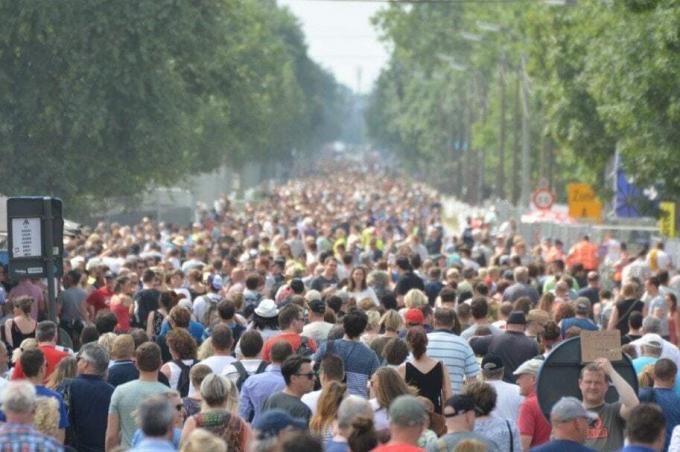Statistical Population is understood as grouping or set of elements, with special, similar and common characteristics that are part of a universe, this condition of similarity facilitates their meeting to carry out statistical studies.
Its importance lies in the fact that after its analysis Statistical conclusions can be generated, which in turn can serve as a basis for later decision-making.
Advertisements
In other words, the statistical population is a variable that is related to a reference group to be studied and the object of observation can be any elementment, whether they are objects or people with common characteristics that differentiate them from the rest.
These elements, whether they are things or people, that make up the statistical population have several traits that can be the subject of a study, for example, a person has several characteristic features, among they:
Advertisements

- Age
- Sex
- Profession
- Size
- Weight
- Skin color
- Hair color
- Race
- Scholarship
- Alcohol consumption
- Smoking habit
- Nationality
These characteristics describe the elements, and therefore, the population that they comprise; Each of these features is usually referred to as a statistical variable and can be quantitative or qualitative.
Advertisements
Generally, when starting a Statistical studyIt is very likely to find a large population, so its treatment is cumbersome and inconvenient; In these cases it is best to divide the universe and work with a small representative group of the statistical population, this reduced portion is called a sample.
For this, it is important to consider making a delimitation that considers both the period of time in which the study will be carried out and the space that will be taken into account.
Advertisements
Thus, the phenomena or behaviors observed in the elements of the sample, and thanks to the statistical inference, the results and conclusions of the study can be extrapolated to the rest of the population being investigated.
In this article you will find:
Statistical Population Types
The statistical population has been cataloged into several types, some of them are mentioned and described below:
Advertisements
The Finite Population
It is made up of a small number of elements, their number is clearly defined, in addition to being measurable, they also have the ability to be grouped. Some examples of a finite population are:
- Inhabitants of a building
- Students in a classroom
- Number of workers of a company
- Items sold In the month of January
- Inventory of boxes in a shoe store
The Infinite Population
It is made up of a large number of elements, their number is incalculable and immeasurable. Some examples of infinite population are:
- Sand grains in Acapulco
- Number of waves that occur in a hurricane
- Raindrops smaller than 1 centimeter that fall in one day
- Liters of water in an ocean
The Real Population
It is made up of concrete, verifiable elements of real existence. Some examples of real population are:
- People of working age located in Mexico City
- Number of users of a mobile application
- Number of online players on a payment platform
- Number of movies starring a specific actor
The Hypothetical Population
It is composed of a possible number of elements, its number is hypothetical and its verification is not possible, is generally related to hypothetical observations or referring to psychological traits of the people. Some examples of a hypothetical population are:
- Anxiety level of an addict when he stops using narcotics
- Fear that people feel during a kidnapping
- Level of happiness of a person when obtaining their first job
The Random Population
It is characterized by randomly varying the trait of the elements that are being observed, for example:
- The variation in the weight of a container depending on whether it is empty or full
The Stable Population
It is characterized by the invariance, for a long time, of the trait that is being observed in the elements. For example:
- Geographical features of a territory
- Movement of the planets
The Unstable Population
The trait of the observed elements is unstable, they vary constantly, for example:
- Cigarette smoking in a city
The Dependent Population
The value of the population varies totally or partially according to a reason or cause, for example:
- The sales depend on promotion, product quality, ease of distribution and the like
The Polynomial Population
It is made up of several characteristics that must be considered, for example:
- Population censuses


